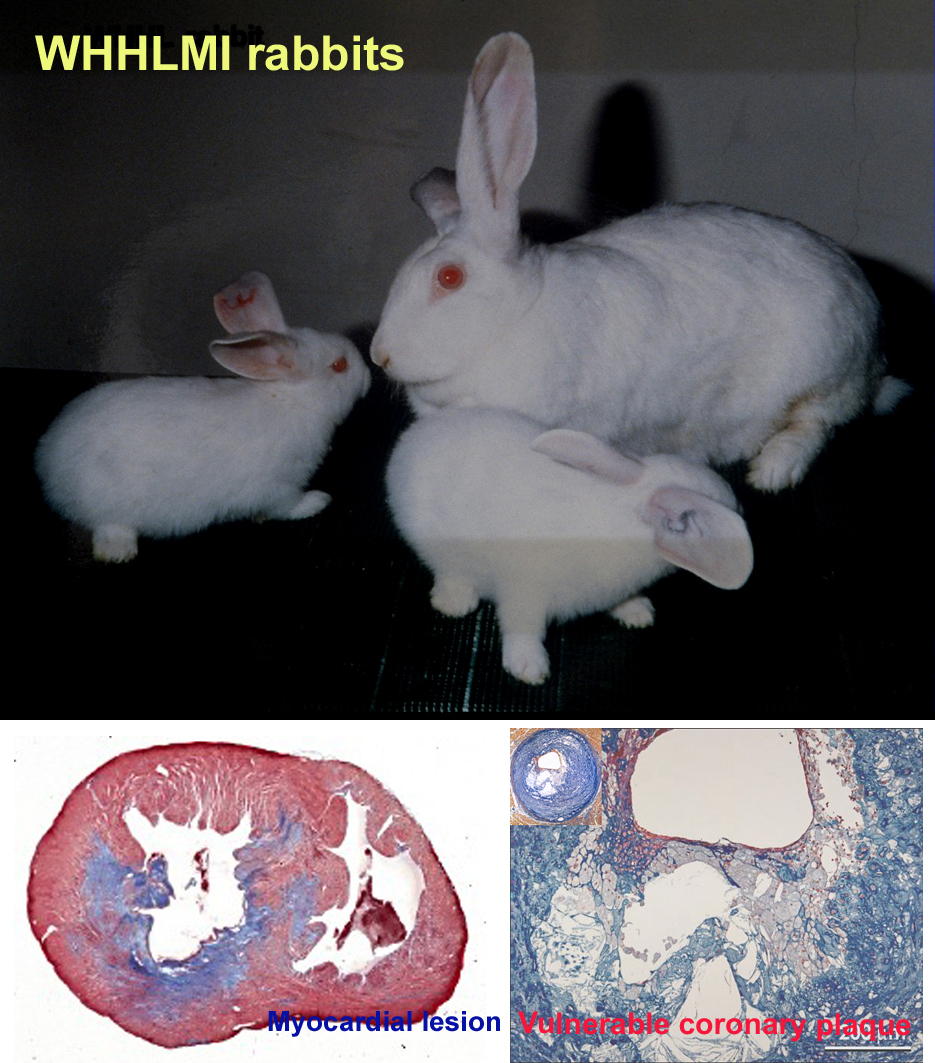 The WHHL rabbit strain was developed by Dr. Yoshio Watanabe. Unfortunately, he died at December 13, 2008. He was 81 years old. We, as the successors of the WHHL rabbit colony, published a review article on the history of the development of WHHL rabbits to look back on the history of research using WHHL rabbits and to pay tribute to his scientific achievements. In this review, I will explain the history of the development of WHHL rabbits, as well as the characteristics of WHHL rabbits and their application to translational research on human hypercholesterolemia and related diseases, including atherosclerosis.
The WHHL rabbit strain was developed by Dr. Yoshio Watanabe. Unfortunately, he died at December 13, 2008. He was 81 years old. We, as the successors of the WHHL rabbit colony, published a review article on the history of the development of WHHL rabbits to look back on the history of research using WHHL rabbits and to pay tribute to his scientific achievements. In this review, I will explain the history of the development of WHHL rabbits, as well as the characteristics of WHHL rabbits and their application to translational research on human hypercholesterolemia and related diseases, including atherosclerosis.WHHL rabbits have contributed to the study of lipoprotein metabolism and atherosclerosis in vivo. For example, WHHL rabbits contributed to the Nobel Prize-winning research by Goldstein JL and Brown MS. We provided them with WHHL rabbits in 1980, and they used WHHL rabbits to prove the hypothesis on the LDL receptor pathway in vivo. Their research on lipoprotein metabolism was highly praised and they were awarded the Nobel Prize in 1985. WHHL rabbits have also contributed to research on the development of atherosclerosis and the destabilization of atheromatous plaques, as well as the development of compounds that lower plasma cholesterol levels and inhibit atherosclerosis. In particular, WHHL rabbits contributed greatly to the development of statins, which are prescribed to more than 40 million patients worldwide.
In 1999, by selectively breeding WHHL rabbits, which are prone to coronary arteriosclerosis, a new group of WHHL rabbits that spontaneously develop myocardial infarction was created and named WHHLMI rabbits.
This site describes the characteristics and development history of WHHL and WHHLMI rabbits, their contributions to research on hyperlipidemia and arteriosclerosis, and their contributions to the development of treatments and diagnostic methods for these diseases.